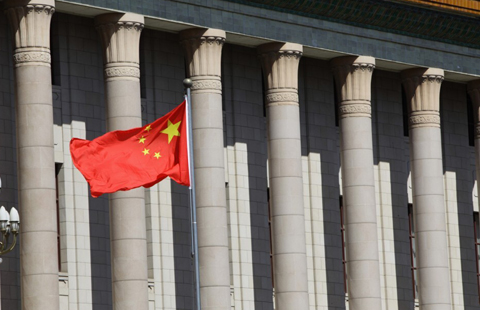Tibet honors outstanding doctors
Updated: 2014-11-05 21:18
(Xinhua)
|
||||||||
LHASA - Twenty traditional Tibetan doctors received government awards Wednesday for their outstanding skills and contribution to the preservation of the ancient practice.
The laureates included specialists from a Tibetan-medicine hospital in Lhasa, as well as doctors from county hospitals and remote village clinics, said sources attending a conference on the development of traditional Tibetan medicine in Lhasa, capital of southwest China's Tibet Autonomous Region.
They were selected from dozens of candidates by an evaluation committee consisting of experts and officials from the regional health and social security authorities.
Nyima Tsering, 55, president of the Lhasa-based Hospital for Traditional Tibetan Medicine, was among the laureates. He was honored for his compilation of Tibetan medicinal practices, which he collected over his 40-year career.
"Tibetan medicine is an important part of Tibetan culture, and it's the obligation of every Tibetan doctor to keep this ancient discipline alive," Nyima Tsering told Xinhua in an interview Wednesday.
This marks the second time the regional government conferred honors on its local medical teams. Sixteen Tibetan doctors were honored for the first time in 2009.
Tibet autonomous region has 33 Tibetan medical institutions. At least 78 percent of its village clinics also provide traditional Tibetan medicine.
Traditional medicine employs more than 2,200 people across Tibet, said Purbu Dolma, head of the regional health and family planning commission.
He said Tibet was hoping to include its traditional medicine in UNESCO's list of intangible heritage.
In the past, Tibetan medication was available only at monasteries. The ancient discipline only gained exposure after the first public hospital for Tibetan medicine was founded in Lhasa in 1989.
Tibetan medicine, also known as Sowa Rigpa in the Tibetan language, is at least 2,300 years old. It has absorbed the influences of traditional Chinese, Indian and Arab medicine and is in practice in Tibet and the Himalayan region.
Similar to traditional Chinese medicine and in sharp contrast to biomedicine, Tibetan medicine uses herbs, minerals and sometimes insects and animals.
Tibetan medicine schools have a presence in more than 30 countries. The four medical tantras, the primary teaching texts for training Tibetan physicians, have been translated into many languages, including English, German, French, Russian and Japanese.
Most Viewed
Editor's Picks

|

|

|

|

|

|
Today's Top News
New relationship to advance
Chinese lift profile in US elections
US-China trade deficit hits record high
Movie moguls gather at LA film summit
Oklahoma seeks Chinese investment
Festival pays tribute to Chinese film
Top Chinese violinist remembers New York
Shanghai FTZ explained
US Weekly

|

|
















